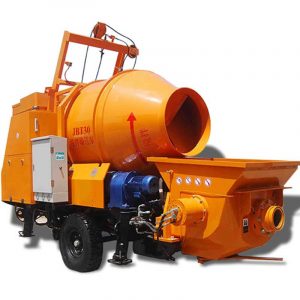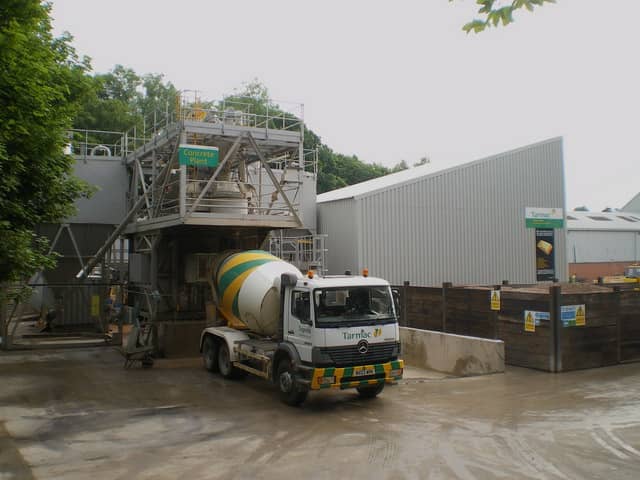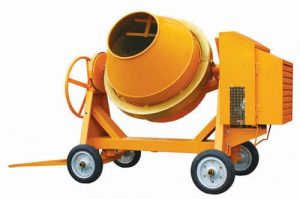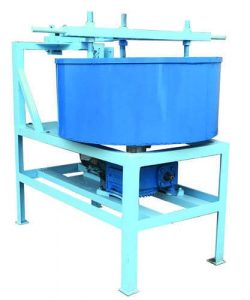What is a Concrete Mixer?
Concrete mixers are machines helping men to prepare a concrete combination of different strengths concisely and quickly. Few concrete mixing machines are suitable for making mixture at the construction site. Preparing a concrete mixture of different strengths, consistency and properties demands different mixers accordingly.
Convenient concrete mixers are given preference for little and medium-sized applications but for big projects and contracts, concrete batching plants are built.
Concrete mixing is a process in which gravel, sand, water, and cement are mixed homogeneously mixed. Mixing sand, water, concrete, and gravel is called concrete mixing. Concrete is used for beams and columns. There are two methods of mixing.
- Manually
- Machine mixing
All raw material is mixed either manually or by machines. Mostly manual mixing is given preference for smaller level construction and bigger construction projects machines are used. Machines are further divided into categories.
They are divided into these two types: –
- Batch mixer
- Continuous Mixer
Also Read: Planning And Site Preparation For Concrete
Batch Mixer
The batch mixer is a type of mixer that produces concrete one batch at a time. All the materials are added to one side of the machine and the mixed material is taken out before adding the next batch. The velocity and angles of the sharp knives adjusted inside the drum can be changed.
Batch mixers are not used at high-level construction sites because they are more time taking and can slow down the process.
Further categories of batch mixers are discussed below.
Drum Mixer
All the drum mixers have a holder with a cross-segment. The knives are joined inside the portable drum. Their basic plan is to lift the materials as the drum turns. In each turn, material drops again into the mixer at the lower part of the drum and the cycle starts again. The speed of the drum and angle of rotation are controllable.
There are further three types of drum mixers:
- Tilting Drum Mixers
- Non-tilting drum mixers
- Reversing drum mixers
Tilting drum mixers
As the name shows tilting drum mixer has a phenomenon that allows it to spin and rotate. When the drum is horizontal (At an angle of 0 degrees with the x-axis) More energy is provided to the material inside the drum so that the material is lifted to full height before dropping down. 90% of blending is performed during this drop process.
The energy supplied is directly proportional to the height. Greater the height greater the energy. We cannot tilt the drum completely vertical (90 degrees from the x-axis) as this position hinders the blending process. Therefore, it is kept at a max angle of 15 degrees. At last concrete, the drum is moved downwards.
Non-tilting drum mixers
Non-tilting drum mixers have a fixed shape and axis of rotation. Material is added from one end and a homogenous mixture is released at the other end.
Reversing drum mixers
These are very like non-shifting drum mixers; these mixers likewise have openings at the two ends and the constituents of the concrete mixture are poured in from one end and the product is released from the other. The major difference between reversing drum mixers and non-tilting drum mixers is that these mixers have two systems of sharp edges.
One of them encourages the blending cycle while the drum is turning a specific way and the other helps to release the concrete material.
Pan Mixers
This kind of mixer has a cylindrical pan rather than a drum where cement is mixed with other material thoroughly. Like all other mixers, these have sharp knives that ease grinding and mixing. The Star shape of the knives ensures an ideal, homogenous, and perfectly saturated mixture.
There are chances that mortar gets stick to the walls of the container and thus decreases the quantity of the output. This problem is solved by introducing scrubbers that prevent the adherence of mortar to the walls. Generally, pan concrete has two unique methods of activity:
- In the first type, the pan is fixed, and the knives are mobile about a vertical axis.
- In the Second, in which the knives are static while the cylinder rotates about a vertical axis.
It does not matter if the drum is static, or the knives are static. Both work perfectly and these mixers are the most effective and best of all. Realizing unit is at the lower end. When construction requires a bit stiff mixture these mixers are used.
Continuous Concrete Mixers
These mixers work with no interference and continue to deliver concrete continuously. The raw material that includes sand, cement, water, and gravel is added continuously from one end and the mixture is taken out from the opposite side continuously. Consistent mixers like this are set up in the building site itself. They have three different parts for performing different tasks. Feeder unit for the intake of raw materials, a mixer for mixing, and a section to release concrete. In Continuous concrete mixers, time is not wasted in waiting for the first batch to get ready and entering the second batch.
Feeder unit for the intake of raw materials, a mixer for mixing, and a section to release concrete. In Continuous concrete mixers, time is not wasted in waiting for the first batch to get ready and entering the second batch.
Traveling Concrete mixers
Traveling concrete mixers are beneficial when the construction site is at a sufficient distance from the batching point. These concrete mixers are used for transferring concrete to the site in time. Otherwise, concrete might start the initial setting.








Leave a comment